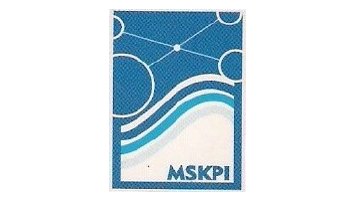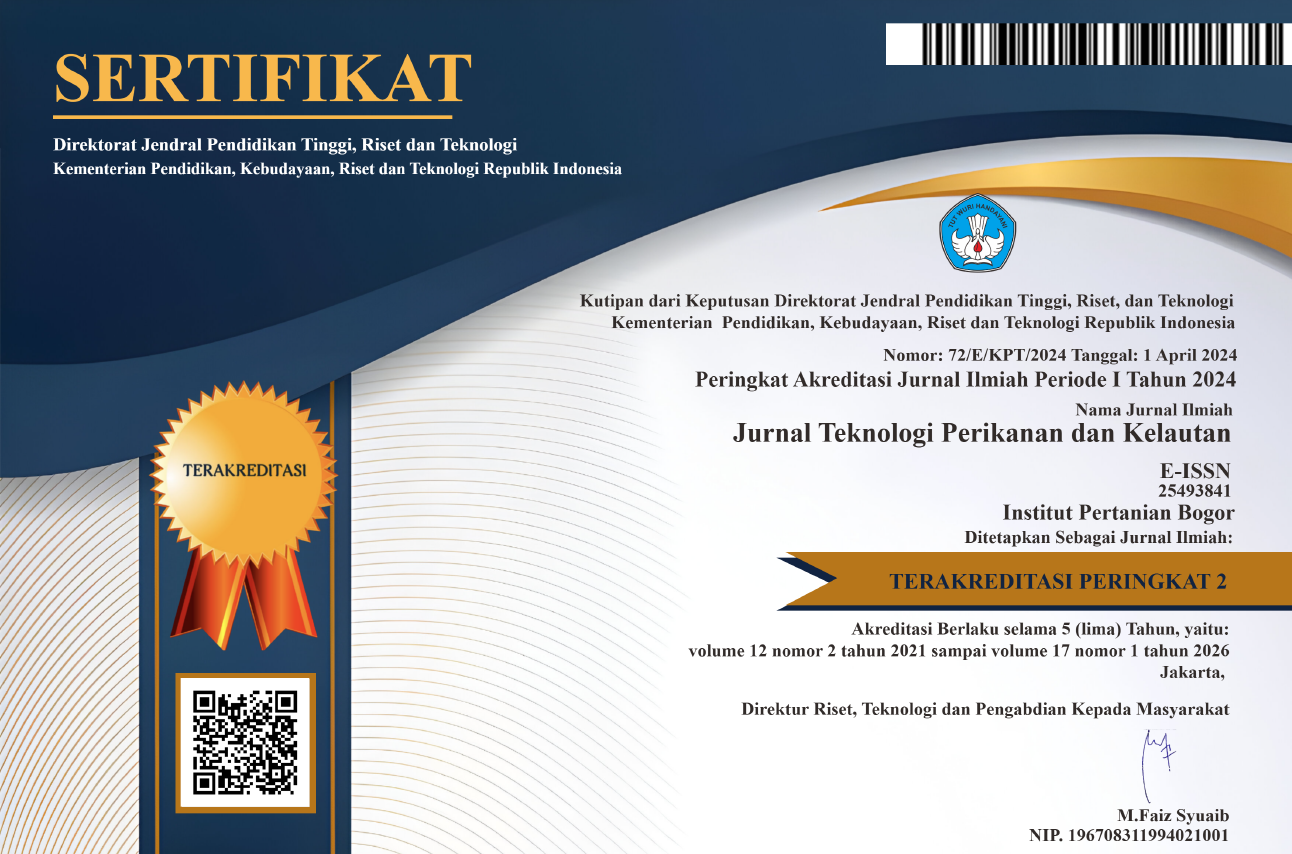DAMPAK PENANGKAPAN TERHADAP STRUKTUR DAN TINGKAT TROFIK HASIL TANGKAPAN IKAN DI PERAIRAN MALUKU TENGGARA
Abstract
Fishing has adirect and indirect impacton coastal and marine ecosystems. The fishing activity has been intensively conducted in the Southeast Maluku district and potentially impact the fish resources negatively. Fishermen generally catch fish using gill nets, lift net and hook line. This study aims to analyze the impact of fishing on ecosystem structure and trophic level of the catch by each fishing gear. An experimental fishing was conducted for the sampling strategy by means of fishing operations using gill net, lift net and hook line. Data were analyses for parameters of feeding habits, length-weight relationships, and trophic level of the catch. The results showed that trophic level of fish taken by lift net and gill netranged from 2.9 to 3.7 which grouped as TL3, dominated by species of omnivorous feeding habit (zooplankton). The gill net has dominantly caught the group of fish at trophic level 5 (4.0–4.5). The average total length of the dominant fish targets were D. Russeli (18.2±12.5cm), Sardinella longiceps (19.8 ± 13.3cm), S.crumenopthalmus (21.9 ± 14.2cm), Lethrinus lentjan (20.1 ± 13.3 cm) and Upeneus mulocensis (21.9 ± 14.2 cm). For the average weight of the main catches were D. Russeli (90 ±35 g), Sardinella longiceps (81±28g), S.crumenopthalmus (89 ± 40g), Lethrinus lentjan (92 ± 28g) and Upeneus mulocensis (90 ± 30g). The catch by lift net, gillnet and hook line indicates unbalance exploitation of the natural food chain. TL groups 3 and 5 was more dominantly exploited. It is theoretically potentially impacting the ecological balance of fish resources in these habitats. Furthermore, the lift net and gill net have greater impact on sustainability of fish resources than hook line due to both the earlier dominantly exploited unallowable catch sizes (juvenile) of the fish target.





















